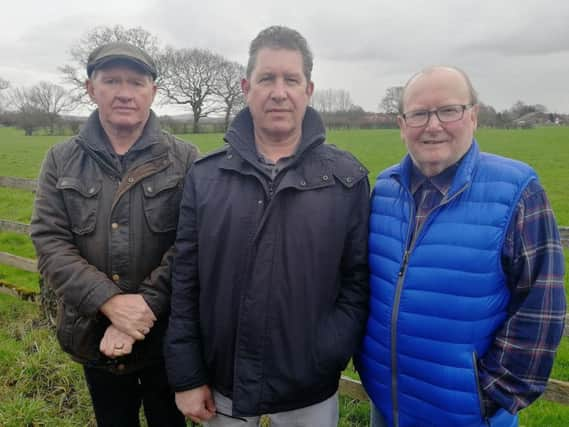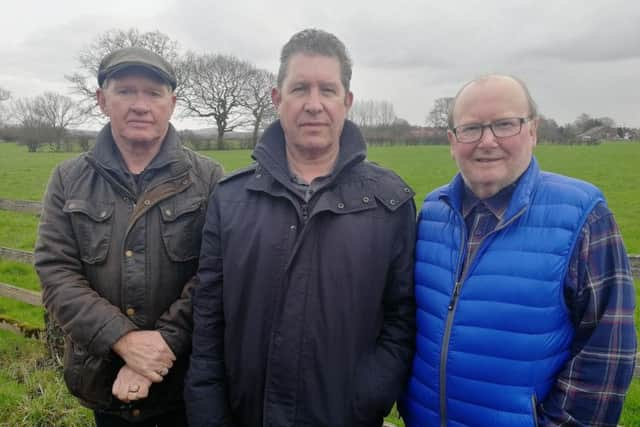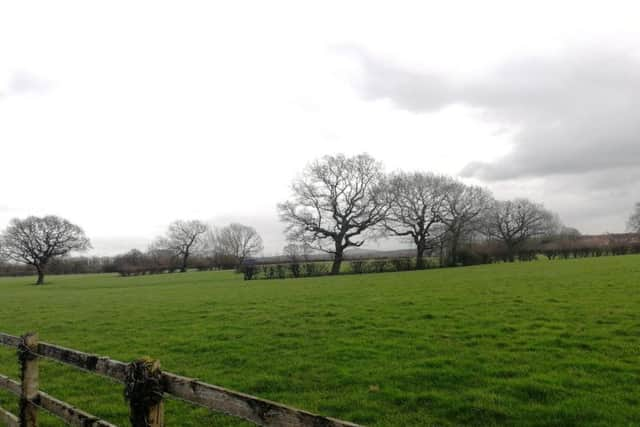Residents lose lone battle with housebuilder over major development in South Ribble


A planning inspector overturned a decision by South Ribble Borough Council to refuse permission for more than 260 homes on land off Brindle Road in Bamber Bridge.
But because the authority decided not to defend its stance - after losing a similar appeal by another developer which controls the rest of the site - the Brindle Road Action Group (BRAG) decided to mount its own case.


Advertisement
Hide AdAdvertisement
Hide AdResidents were quizzed by legal representatives of Persimmon Homes during a three-day hearing shortly before Christmas. But if the housebuilder’s barrister was expecting to bulldoze BRAG’s arguments easily, group member Peter Carter claims that the QC was instead confronted with a case built on firm foundations.
“We put them under pressure over two or three issues - and they had to go rooting through their documents before they could answer us,” Peter says.
“But when you’re up against professionals, it is a little bit intimidating,” he admits.
While Peter is grateful to government-appointed planning inspector Richard Clegg for “explaining things” throughout the inquiry, his overriding feeling is one of disappointment at the final decision.


Advertisement
Hide AdAdvertisement
Hide Ad“We’ve been fighting this for nearly five years and put genuine points throughout. We have had about 100 people behind us all the way and felt like we had to do it for them.”
Councillors on South Ribble’s planning committee previously rejected applications by two developers to build a combined total of just over 450 homes on the former Grey Gables Farm - going against the recommendations of the authority’s planning officers in both cases.
The council opted not to contest Persimmon Homes’ appeal after Bellway Homes won a challenge against the refusal of permission to build on its part of the 22 hectare site.
The inspector in the Bellway inquiry did not award costs against the authority, but a confidential report to planning committee members warned of “risks” to the council if it also fought the Persimmon appeal. On the casting vote of the chair, the committee withdrew from the case - but the council encouraged residents to attend the hearing anyway.
Advertisement
Hide AdAdvertisement
Hide AdPeter Carter describes that decision as “pathetic”. “How could they not defend it on behalf of the people?” he asks.
BRAG argues that the two cases were very different - and that South Ribble had a better chance of defending its decision in the Persimmon case, because of the planned estate’s proximity to two motorways rather than just one.
A number of individual councillors did attend the hearing - but not representing the authority - to help make the case that the original refusal of permission should stand.
The entire site was originally earmarked for 250 homes under South Ribble’s local plan, but the inspector in the Bellway case ruled that figure was “indicative” - and 454 are now set to be built in total.
Advertisement
Hide AdAdvertisement
Hide Ad“We weren’t against the development in principle - we knew it had to come. There was originally a plan for 220 homes [on Persimmon’s land alone] which we were ready to accept,” Peter explains.
“I’m all for getting young people on the housing ladder - it’s a disgrace the way things are now. But this is just an example of greedy developers who could have built fewer houses and had more space for better measures to reduce air and noise pollution.”
Fellow BRAG member Martin Topping describes the group’s five-year fight since the plans were first put forward as a “David and Goliath battle”.
“But I’d do it all over again,” he adds.
COUNCIL DEFENDS DECISION NOT TO DEFEND DECISION
“The application by Persimmon Homes to develop the Brindle Road site was refused by the council’s planning committee. Officers of the council subsequently attended the Inquiry to assist the Inspector and all parties. The council chose not to contest the applicant’s case in light of the planning inspector’s decision on an adjacent site.”
‘DEVELOPMENT IS IN-KEEPING WITH AREA’
Advertisement
Hide AdAdvertisement
Hide AdA spokesman for Persimmon Homes Lancashire said: “Persimmon Homes welcomes the planning inspector’s appeal decision. The development will provide a mix of house types and styles across the site and the design has been carefully considered.
“National guidance encourages planning policies and local authorities to make decisions that ensure that developments make optimal use of the potential of each site. The company considers the number of proposed new homes to be appropriate and this was supported by the planning inspector.
“In agreement with the planning inspector’s comments the proposal does not involve over-development of the site, and the design of the scheme is not out of keeping with its surroundings.”
WHAT THE INSPECTOR SAID AND WHY RESIDENTS DISAGREE
The inquiry into Persimmon Homes’ plans turned on issues of noise pollution and highway safety.
Advertisement
Hide AdAdvertisement
Hide AdPlanning inspector Richard Clegg ruled that noise from the nearby M61 motorway would not result in “unacceptable living conditions”. He cited an acoustic barrier and enhanced glazing, concluding that ther combined effect would ensure that maximum noise levels inside the properties would not be exceeded.
External noise levels would exceed British Standards recommendations by 5db, reaching 60db at some properties, but this was deemed by South Ribble’s own environmental health officer as “acceptable in gardens, provided that every step has been taken to reduce sound levels as much as possible”.
The Brindle Road Action Group (BRAG) said the original local plan inspection hearing accepted that “extensive buffering” would be required to protect residents from air and noise pollution.
Group member Tom Nuttall said a bund constructed out of earth should be built around all borders with the motorway - under Persimmon's plans, an earth bund and fence would be constucted close to the border with the M61, but a fence alone would be used on the boundary closest to the M6.
Advertisement
Hide AdAdvertisement
Hide Ad“This does make you question if our views were being taken seriously by the [latest inquiry] or were they just listening out of courtesy to local residents?” Peter Carter asked.
The inspector also dismissed concerns over the effect of the new estate on the volume of traffic on surrounding roads. He accepted that three junctions would exceed their “practical capacity” at peak times, but only two as a direct result of the development.
Mr. Clegg also found that there would be an increase in queuing at a level crossing close the junction of Brinde Road and Bank Head Lane, which the inquiry heard already prompted dangerous overtaking manoeuvres. However, he concluded that none of the issues highlighted would have a severe “residual impact” on road safety.
Peter Carter rejected the inspector’s findings.
“This is against all the facts BRAG and the local community have produced proving this junction cannot cope with the present day traffic numbers.
Advertisement
Hide AdAdvertisement
Hide Ad“It shows that the inspector was completely out of touch with the chaos these developments will cause to the local road network. These extra vehicles, as every resident knows, will have a huge impact on the Hospital Inn crossing, causing much longer queues than present - which are already unacceptable at peak times,” he added.